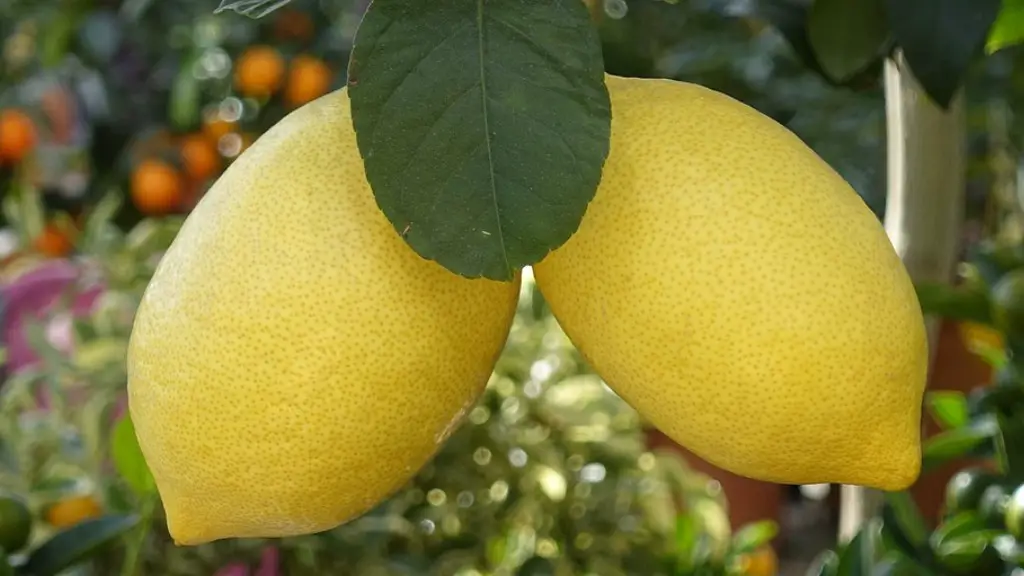Can you bonsai a lemon tree? The answer to this question is “yes” – but it is a very delicate process. Bonsai is an ancient art of cultivation, defined as the practice of growing trees in a small containers or trays. In the bonsai process, the artist shapes the tree to create a miniature form, representing the natural beauty of a full-grown tree. When it comes to lemon trees, there is potential to achieve a beautiful and authentic bonsai, but it must be done with great care, as any missteps can lead to failure.
In order to successfully bonsai a lemon tree, it is important to take the proper steps from the outset. Selection is key – you should carefully choose a healthy, young tree with a wide bottom, since lemon trees are often tricky to work with. When potting your lemon tree, use a shallow and wide container with excellent drainage. Inspiration for design should come from existing bonsai examples, since lemon trees have unique requirements and should be pruned and wired differently than other bonsai trees.
When tending to your lemon bonsai, it is important to remember that lemon trees require high levels of humidity yet they can be extremely sensitive to over-watering. To keep your lemon tree healthy, consider misting with a spray bottle every day and be sure to water it thoroughly with a diffusion method at least three times a week. During the warmer months, you should fertilize your lemon tree with a slow-release fertilize every 4-6 weeks, making sure to only put small amounts at the base of the tree. Finally, be sure to prune and wire your lemon bonsai regularly to produce a natural, attractive look.
So, can you bonsai a lemon tree? Absolutely! With care, patience, and the right environment, you can grow an aesthetically-pleasing lemon tree bonsai. Remember to give your lemon tree lots of love and attention, and it will not only look beautiful but give you a lot of joy too.
Other Key Considerations
When considering whether to bonsai a lemon tree, there are a few other key considerations to keep in mind. For one, the lemon tree can be challenging to work with at times, so it is important to be patient and remain dedicated throughout the process. Additionally, the climate can play a significant role when growing a lemon tree bonsai, so make sure that you pick a location that has light, heat, and humidity appropriate for the species. Finally, when it comes to watering and fertilizing, the ratio should be well-thought-out and carefully monitored, as both under-watering and over-watering can lead to failure.
Potting Soil Tips
One of the most important factors to consider when bonsaiing a lemon tree is the type of potting soil used. Lemon trees prefer soils with low moisture retention and good drainage, so be sure to find a potting mix that is specifically designed for lemon trees. Avoid peat-based soils, as they tend to be too acidic, and be sure to look for a brand that does not contain large particles, as this can cause excessive water retention and poor aeration. Finally, when selecting the soil for your lemon bonsai, research and read reviews to ensure it is the best option for the health of your tree.
The Benefits of Bonsaiing a Lemon Tree
When successfully bonsaiing a lemon tree, it can offer fantastic benefits both in terms of aesthetics and health. The process of bonsaiing a lemon tree allows you to enjoy the sight and fragrance of this beautiful species in a small version of its natural form, meaning you don’t need a lot of space to grow it. Additionally, because the tree is smaller, it will require less water and fertilizer than its full-size sibling, making it perfect for those who need to conserve resources.
What to Expect from the Bonsai Process
When bonsaiing a lemon tree, it is important to have an understanding of the process and what to expect. Before beginning, research what is involved and plan for the timeline – some species may take up to a year to grow properly. Make sure you also have all the necessary tools, such as pruning and wiring tools, potting materials, and soil. Finally, remember that bonsai trees require a lot of commitment and dedication in order to produce beautiful and long-lasting results. However, if you are patient and consistent with tending to your tree, you should reap the rewards of a beautiful and unique bonsai.
Training and Maintenance
To ensure that your lemon bonsai continues to look attractive and stay healthy, regular maintenance and training are essential. Pruning, wiring, and repotting should all be done regularly, and you should look for any signs of disease or pests, so you can address them immediately. Along with periodic maintenance, it is also important to regularly assess your lemon bonsai to ensure that it is growing properly and as desired. Finally, remember to take breaks from bonsaiing, as it is a physically and mentally demanding task that can become burdensome if taken on too much.
Potential Challenges
Bonsaiing a lemon tree can occasionally present some potential challenges and issues. One potential issue is root rot – if the tree is overwatered or not given proper drainage, the roots can become diseased. Additionally, as mentioned before, lemon trees are prone to pest infestation, so regularly inspect your lemon bonsai for signs of pests. Finally, if your lemon tree is not given the right kind of environment and does not receive enough sunlight, it will not be able to thrive. That is why it is so important to understand the needs of the species, and ensure that it is given the proper attention and care.

